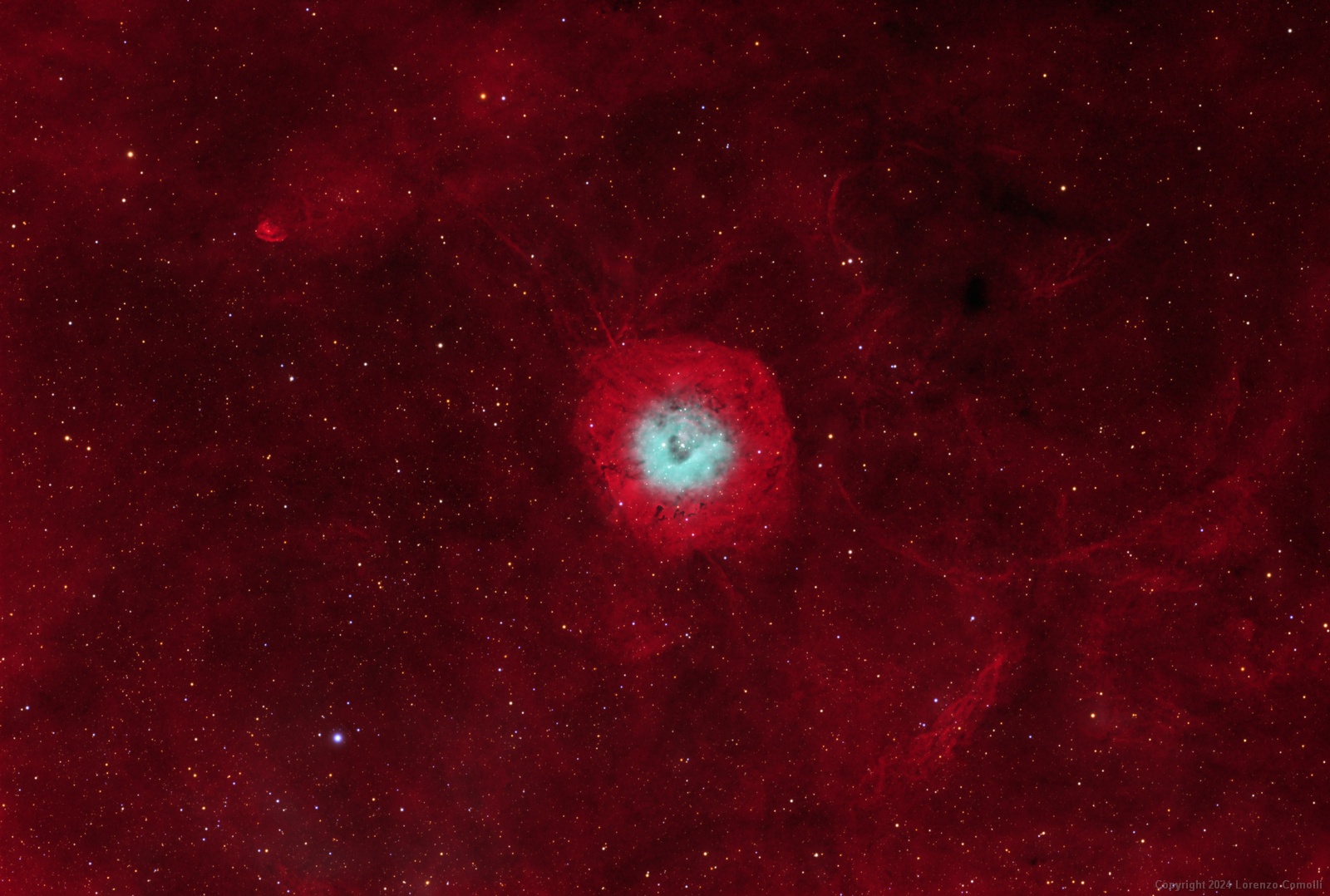|
Technical Data
|
| Optics |
TEC 140
|
Focal
Length
|
1011 mm
|
| Focal
Ratio |
f/7.2
|
| Exposure
Time |
Total 9
h 10 min, composed of Ha-OIII-RGB
400:70:20:20:20 min (single exp of
10 min for Ha and OIII,
and 5 min for RGB) |
| CCD |
ZWO ASI
6200 MM @-20°C
|
| Location |
Saint
Barthelemy, Leyssè area (AO, Italian Alps) at
1600 m height
|
Date
|
27-28
September 2024 (2 nights)
|
| Mount |
Gemini
G-41
|
| Tracking |
ZWO ASI
174 mini on an 80mm f/5 refractor
|
| Temperature
and
humidity |
T= (+3
to -1) °C, RH=(55 to 75) %
|
| Sky brightness at
zenith (with SQM-L) |
(21.1 to 21.4)
mag/arcsec^2 |
| Notes |
Quite clear and dark
nights, except the first part of
the first night.
|










